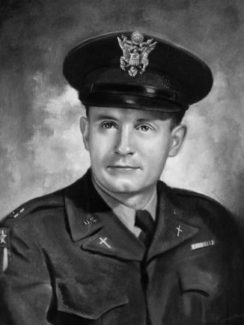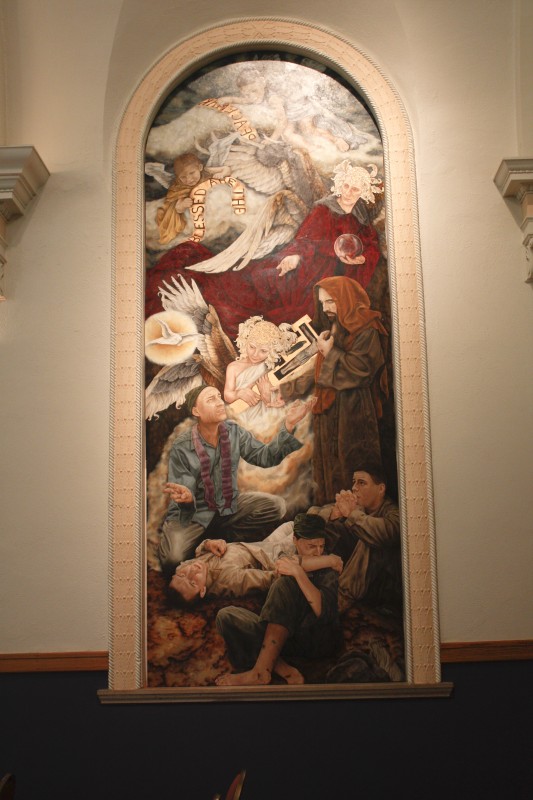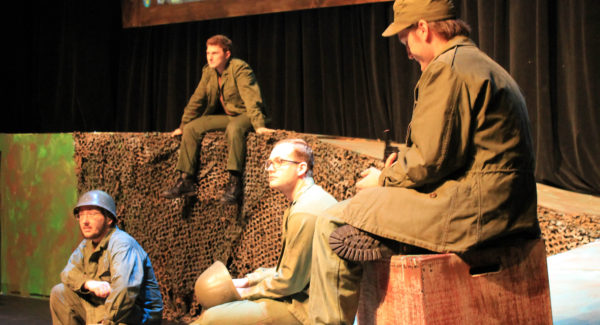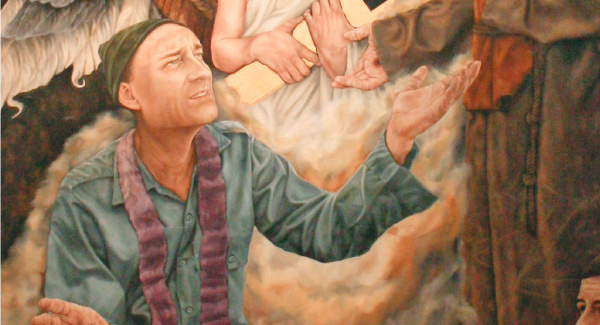Every Memorial Day weekend, Americans all over the country honor individuals who serve in the United States military and those who have lost their lives while serving our country.
Father Emil Kapaun is one of those individuals. He is especially connected to the Newman community and the greater Wichita community. Those who aren’t familiar with Kapaun may wonder why the community seems to have such a fascination over the work of one priest?
Kapaun was born April 20, 1916, in the small farming community of Pilsen, Kansas. After he realized his calling from God, Kapaun was ordained a priest in 1940 in St. John’s Chapel at Newman University, known then as Sacred Heart College, underneath a large cross that still hangs over the tabernacle to this day.
Kapaun decided to serve the United States by enlisting in the U.S. Army Chaplain Corps during World War II. Kapaun came home after two years to get his advanced degree in education and to be the pastor of his home church, but he could not stay away for long. By 1948, Kapaun was back in the Chaplain Corps.

In 1950, Kapaun and the 8th Cavalry Division were sent to defend South Korea. During the Battle of Usan, they were ambushed by a large group of Chinese soldiers. Throughout the battle, Kapaun continually moved under direct enemy fire to save wounded soldiers outside the perimeter.
Instead of taking the multiple opportunities given to him to escape, Kapaun instead volunteered to stay and care for those wounded both physically and spiritually.
The 8th Calvary was eventually taken prisoner and forced to march 60 miles in extreme cold to a prison camp on the China border.
In the seven months that followed, Kapaun did everything he could to keep the prisoners alive. He often ignored his own well-being to provide for those in need. He would steal food for those who were hungry, washed clothing, tended to the sick and used his prayer and humor to lift the soldiers’ spirits.
When Kapaun fell ill in 1951, the Chinese denied him medical assistance, and Kapaun died on May 23.
Kapaun’s death and the way that he lived his life during the war brought a desire from members of the Wichita community for him to become a saint.
Kapaun was named a Servant of God in 1993, which signified that the investigation into his work and writings could be conducted so he could be considered for sainthood.
Throughout the 20 years that followed, more people around the country grew aware of the work of Kapaun during the Korean War and felt that he deserved recognition.
In 2013, Kapaun was posthumously awarded the Medal of Honor by President Barack Obama. The following day, he was inducted into the Pentagon’s Hall of Heroes for his service during the Battle of Usan in 1950.
Now, 60 years after his death, his legacy and the hope for sainthood continue in the Wichita community.

Newman University unveiled a 12-foot by 4 ½-foot mural of Father Emil Kapaun on Aug. 5, 2009, in St. John’s Chapel by artist Wendy Lewis. The mural features Kapaun among soldiers and angels, symbols in the form of a glass orb and barbed wire. The crucifix that Kapaun was ordained under and that still hangs in St. John’s Chapel is also featured in the center of the mural.
In 2013, Wichita Eagle writers Travis Heying and Roy Wenzl published a book titled “The Miracle of Father Kapaun,” which focused on Kapaun, the seeming miracles that have been attributed to him, and the men that he saved during the Korean War. A complementing movie about Kapaun was also produced.
In February 2017, the Newman theater department performed the world premiere of the theatrical version of “The Miracle of Father Kapaun.”
The play was written by Anne Welsbacher and directed by Misty Maynard and featured a variety of Newman students in showing the story of both Kapaun and Chase Kear, a 20-year-old Hutchison Community College student who had a near-fatal pole-vaulting accident.

The miracle that happened to Kear has been considered to be attributed to Kapaun’s intercession and is one of three miracles that has put Kapaun on the road to candidacy for sainthood.
Still on the road to sainthood, Kapaun supporters have found ways to keep his legacy alive.
For the past 11 years, people from the community have taken on the 60-mile trek that encompasses the Father Kapaun Pilgrimage. Held over four days, the pilgrims make the journey from the Church of the Magdalen in Wichita, Kansas, to Pilsen, Kansas, where the pilgrimage ends with Mass.
Hundreds show up for the walk every year. The 2019 pilgrimage will be May 30 to June 2.
There are many lessons to be taken from Kapaun’s life and death, but as he said, “Out of suffering have emerged the strongest souls.”

